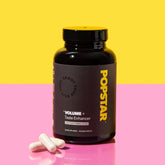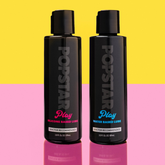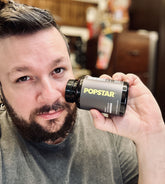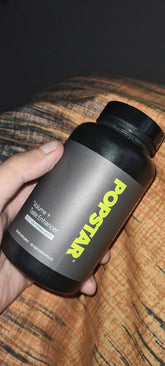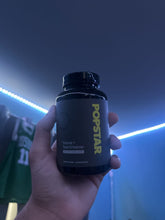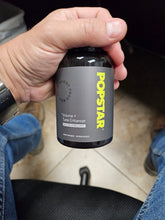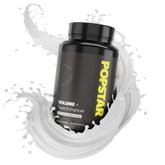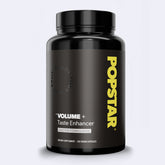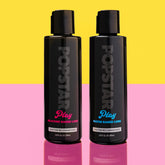Ampallang Piercing is a specific type of male genital piercing that has a long and culturally significant history in various regions of the world. This piercing traverses the penis horizontally, typically passing through the glans, sometimes incorporating the urethra depending on the individual’s anatomy and personal choice. The Ampallang Piercing is often sought for both cultural reasons and potential added stimulation during intimacy. In this comprehensive guide, we’ll explore what an Ampallang Piercing is, how it’s done, its potential risks, how to care for it, and answers to frequently asked questions to help you make an informed decision regarding this type of body modification.
Table of Contents
- What is Ampallang Piercing?
- How is Ampallang Piercing Done?
- Potential Risks & Complications
- Aftercare Tips
- Frequently Asked Questions
- Conclusion
- References
What is Ampallang Piercing?
Ampallang Piercing is a horizontal penile piercing that typically passes through the glans of the penis from one side to the other. In certain cases, the piercing may include going through the urethra, creating what is referred to as a “through-and-through” Ampallang. Historically, genital piercings have been practiced in various cultures, often indicating rites of passage or symbols of strength and status. Modern enthusiasts may choose this piercing for aesthetics, personal identity expression, erotic sensation, or cultural homage.
This piercing is known for its complexity. Because the penis contains many nerve endings and blood vessels, proper technique and professional skill are essential. When done by an experienced piercer, an Ampallang Piercing can potentially enhance sexual pleasure for some, although experiences vary considerably between individuals. Adding to the complexity is the fact that anatomy differs greatly from one person to another, and the precise placement of an Ampallang can be tailored according to the thickness of the glans, the distance of the urethral opening, and overall personal preference. Despite its complexity, many men find the Ampallang to be an aesthetically unique and meaningful form of body modification.
Some men may choose this piercing to represent significant personal milestones or to highlight their own experiences with body art. Others, drawn by the idea of increased sexual sensation, seek it out for more intimate reasons. Regardless of motive, prospective candidates should consider the piercing’s permanent nature, the potential for tissue scarring, and the possible complications that come with any penile piercing. Before proceeding, it’s advisable to evaluate one’s lifestyle, personal health, partner’s preferences, and readiness for aftercare and potential healing times of several months.
How is Ampallang Piercing Done?
The Ampallang Piercing procedure begins with finding an experienced and reputable piercer who specializes in male genital piercings. Credentials, professional licensure, and proper sanitation practices are vital factors to consider before booking your appointment. The piercer will explain each step of the procedure and walk you through both the potential benefits and the possible risks, ensuring you feel comfortable and well-informed.
During the procedure, the piercer will typically mark two points on the glans, one on each side of the penis, ensuring that the mark aligns horizontally through the tissue. Some piercers will use a special clamp or receiving tube to stabilize the area before inserting a hollow needle from one side to the other. If you opt for the through-and-through variant, the needle may pass through the urethra, which can increase both complexity and, in some cases, the risk of complications.
Once the needle has passed through, it is followed by customized jewelry, commonly a barbell. Barbells come in various gauges, with 10 to 12 gauge being popular. Intermediate or advanced enthusiasts sometimes opt for thicker gauges for aesthetic or durability reasons. Surgical stainless steel, titanium, and high-quality gold are typical materials because they are biocompatible and help minimize allergic reactions, promoting healthier healing. After the barbell is in place, the piercer secures both ends of the jewelry, ensuring that it sits comfortably without excess tension on the tissue.
Immediately following the piercing, some bleeding, mild to moderate swelling, and localized pain are normal occurrences. In some instances, the piercer will apply a sterile cover or bandage to help manage potential drainage or spotting. Pain levels vary widely. While some individuals describe the initial piercing and early days of healing as particularly intense, others find the pain comparable to standard cartilage or other body piercings. Factoring in your personal pain tolerance and any pre-existing sensitivities will help set realistic expectations for what happens during and immediately after the procedure.
Potential Risks & Complications
Like all piercings—especially those involving delicate or highly vascular areas—Ampallang Piercings carry health risks. Being aware of these risks is critical to nurturing a successful healing process and preventing severe complications. Below are some primary concerns associated with Ampallang Piercings:
- Infection: Bacterial or fungal infection can occur when the piercing is not cleaned correctly or if non-sterile equipment was used. Symptoms such as redness, pus, fever, or increased pain should prompt medical consultation.
- Bleeding: Because of the relatively high vascularity in the penis, heavier or prolonged bleeding can happen immediately after the procedure. Extended bleeding periods are uncommon, but if heavy bleeding continues after a day, seek professional assistance.
- Swelling: Mild to moderate swelling is normal in the early days, and in rarer incidences severe swelling may affect urination or cause discomfort. Staying hydrated, keeping the area clean, and following recommended aftercare can mitigate swelling.
- Scarring: Although scar tissue formation is usually minimal and discreet, some individuals are more prone to hypertrophic or keloid scars. Proper aftercare and patience often help minimize scar tissue.
- Migration or Rejection: Body jewelry can sometimes shift from its original position if the body perceives it as a foreign object. In rare cases, the tissue may reject the piercing altogether, leading to an unattractive or painful exit path.
- Nerve Damage: While rare, if performed incorrectly, the needle could come into contact with nerve endings, leading to additional pain or feeling loss in localized areas.
- Urethral Involvement Complications: In a through-and-through Ampallang (when it goes through the urethra), there is a slightly higher chance of infection, urethral irritation, or issues related to urination.
In most cases, choosing a skilled piercer and committing to daily cleaning greatly reduces these risks. Early detection and prompt intervention if something feels off or painful can prevent complications from escalating.
For men who engage in regular sexual activities or sports, it’s imperative to monitor the healing process and determine whether additional protective measures—like wearing supportive undergarments or using barrier protection—are needed to avoid undue stress on the piercing site.
Aftercare Tips
Proper aftercare is critical to a speedy and healthy recovery from an Ampallang Piercing. The average healing period can range from three to six months or longer, based on personal health, immune response, and whether the urethra was involved. Below are some recommended strategies to support your body during the healing phase:
1. Keep the Area Clean: Gently cleanse the piercing with a sterile saline solution or a mild, fragrance-free soap. Avoid overcleaning, which can irritate the delicate tissue. Aim for twice a day unless otherwise recommended by your piercer or healthcare professional.
2. Pat Dry: After washing, pat the area dry with a clean, disposable paper towel or allow it to air dry. Cloth towels can harbor bacteria. Reducing moisture around the piercing site is crucial for preventing bacterial growth.
3. Avoid Sexual Activity Initially: It’s wise to refrain from sexual activity—or at least unprotected scenarios—until the piercing is significantly healed. Abrasion, friction, or bacteria introduced during intercourse can irritate the piercing and raise the chance of infection.
4. Wear Supportive, Breathable Clothing: Tight-fitting clothing can aggravate fresh piercings, especially if there’s friction. Choose comfortable undergarments made of breathable fabric, like cotton; corral potential movement of the jewelry to prevent unnecessary tugging.
5. Monitor for Signs of Infection: Keep an eye on swelling, unusual discharge, or prolonged redness. Any sudden spike in pain or fever signals the need for medical evaluation. Early assessment by a healthcare professional can circumvent complications.
6. Be Mindful with Hygiene Products: Strongly scented soaps, lotions, or sprays can irritate the piercing site. Stick with fragrance-free and pH-balanced hygiene products until the site has fully matured and healed.
Each person’s healing trajectory may vary considerably. Maintaining consistent hygiene, avoiding irritants, and seeking prompt advice from your piercer or healthcare professional if you detect anything unusual ensures that your Ampallang Piercing can heal as smoothly and quickly as possible.
Frequently Asked Questions
Does Ampallang Piercing Hurt More Than Other Genital Piercings?
Pain thresholds are subjective, but many individuals report that the Ampallang Piercing feels more intense than simpler body piercings, primarily because the penis is highly sensitive and contains numerous nerve endings. However, the procedure is quick, and a skilled piercer’s technique can help manage discomfort effectively.
How Long Does It Take for an Ampallang Piercing to Heal?
The healing period for an Ampallang Piercing can range from three to six months, with some individuals experiencing longer healing times if the urethra is pierced (through-and-through Ampallang) or if they have a slower healing response. Proper aftercare, a balanced diet, and good hygiene habits can significantly reduce healing duration.
Can I Engage in Sexual Activity While My Ampallang Piercing is Healing?
It’s advisable to wait until the initial healing phase is well under way—at least four to six weeks—before engaging in sexual contact. Even then, it’s crucial to use protection, keep the area clean, and monitor for any increased irritation or bleeding. Excessive friction or introduction of bacteria can lead to inflammation or infection.
What Type of Jewelry is Best for Ampallang Piercing?
Barbells are the most common jewelry choice for Ampallang Piercings. Generally, a straight barbell made of high-quality materials like surgical steel, titanium, or gold is recommended to reduce the likelihood of allergic reactions or rejection. The barbell’s gauge and length will depend on your anatomy and personal preferences.
Does an Ampallang Piercing Increase Sexual Pleasure?
Experiences vary considerably. Some men find that the Ampallang Piercing adds distinct sensations during sexual activities due to the added stimulation from jewelry placement. Others notice no dramatic change apart from a temporary awareness of the piercing. Because personal anatomy and sensitivity are unique, individual experiences differ widely.
What Are the Risks of Piercing Through the Urethra?
A through-and-through Ampallang that passes through the urethra can increase risks such as infection, urethral irritation, and prolonged healing times. While it may offer a more secure fit for the jewelry, careful cleaning—sometimes including rinsing the urethra or adjusting swimming and bathing habits—is necessary to avoid complications.
Can an Ampallang Piercing Cause Permanent Damage?
When performed correctly by an experienced piercer, lasting damage is rare. However, improper technique or poor aftercare can lead to infections and tissue scarring. In severe, but uncommon instances, nerve damage or excessive scar tissue can have long-term implications. This is why choosing a reputable piercer and following thorough aftercare guidelines is paramount.
What If I Decide to Remove the Piercing Later?
If you opt to remove your Ampallang Piercing, the small channel of tissue will typically close up over time. However, depending on how long the piercing was in place and individual healing tendencies, scarring or partial closure may occur. It’s important to clean the site properly during the closure process to prevent infection.
Is Ampallang Piercing Safe for Everyone?
Not every individual is an ideal candidate. Pre-existing medical conditions, daily medication use, or compromised immune systems can affect healing or interfere with the success of the procedure. Consulting a health professional in addition to a professional piercer can help determine if this piercing is a safe choice for you.
Will It Affect My Ability to Urinate?
Initially, especially if the piercing passes through the urethra, you might experience minor discomfort or a change in urine flow. However, once fully healed, most men do not report significant problems with urination. If issues persist, consult a healthcare provider.
Conclusion
An Ampallang Piercing is a profound form of body modification that merges history, artistry, and personal expression. Although it demands considerably more commitment to both the procedure and aftercare than many other piercings, men who choose the Ampallang often describe it as a life-changing enhancement of self-esteem or sexual pleasure. The piercing’s rich cultural background and intricate healing process imbue it with significance beyond aesthetics.
Before making your final decision, it’s essential to consult both healthcare professionals and certified piercers to confirm it is right for you. Address any health concerns, evaluate your anatomy, discuss potential complications, and consider your personal and partner preferences. Once you commit, diligent aftercare—ranging from proper cleaning to cautious sexual activity—plays a major role in determining how smoothly you’ll heal. Awareness of potential complications helps ensure quick intervention and resolution.
Ultimately, whether drawn by curiosity, culture, or a desire for sexual enhancement, an Ampallang Piercing can be a meaningful journey that intertwines your sense of identity with a unique expression of masculine body art. By approaching this process with knowledge and respect for your body, you can experience a safe healing process and a genuinely rewarding outcome.
References
- American Academy of Family Physicians. Information about wound care and infection prevention can be found at: https://www.aafp.org
- Journal of Sexual Medicine. Studies on male genital piercings and sexual satisfaction can be accessed via https://www.jsm.jsexmed.org
- Association of Professional Piercers (APP). Guidelines for safe piercing practices, aftercare, and sterilization protocols: https://www.safepiercing.org
- PubMed. For medical research articles on body piercings, infection rates, and healing complications: https://pubmed.ncbi.nlm.nih.gov
